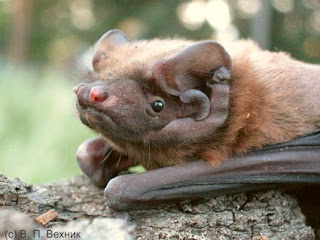
Well Chaps,
The whole colossal squid thing is so 2005 (http://animal-of-the-week.blogspot.com/2005_09_01_archive.html), so with the discovery of stone age tools and more recently a manufactured spear, I have no choice but to make this week's animal of the week Pan troglodytes (chimpanzee).
The discovery of 4000 year old anvils and hammer stones and traces of smashed panda nuts in Ivory Coast reported in Proceedings on the National Academy of Science a couple of weeks back, was a fantastic finding—it appears that when most humans were getting to grips with stone tools and agriculture, the chimps were developing ballet... they had a nutcracking suite.
No? Alright.
This week, it emerges that US scientists in Senegal have witnessed a chimpanzee making and using a spear to kill a bushbaby. Well known for fishing for termites with thin sticks and hunting monkeys in troops. This is the first time that a non-human animal has been observed making and using a tool to hunt for meat. The female took a thin branch, appeared to work one end to a point with her teeth, then jabbed it into a hole in a tree. At first the researchers though she was trying to fish out a beetle grub, but after a few stabs, she broke through to the hollow in the tree and pulled out the well and truly stabbed body of a bush baby. Although successful hunting was observed only once, researchers say several females were seen attempting to hunt in this way.
Now, most hunting by chimpanzees is done by the males, but most tool use by females. Anthropologists reckon that this discovery suggests that females might have also been integral to the development of tool use for hunting in human evolution too. Interestingly, these particular chimps live in savannah mosaic habitat, similar to that in which the human lineage is first presumed to have broken away from that of chimpanzees.
Perhaps, the ancestors of chimps and humans also used tools and that both species have inherited this same behaviour. Personally, I reckon the behaviour has evolved indepedently, if the chimps had really been using these sorts of tools for the past 5-8 million years, why haven't they got to a more advanced stage with it? 2.5 million years ago species of Homo were crafting bone tools and stone axes: have the Pans really not progressed beyond sticks and flat stones in all that time?
Mind you, give them time, and I can see this going the way of humans: it just seems natural that the females should send their tools out hunting. Girls, you know what I'm talking about (obviously that needs to be delivered by a large American lady on a housewife-oriented daytime show).
Sorry, I'm way off the mark this week.


